Understanding Oregon Pinot Noir Country
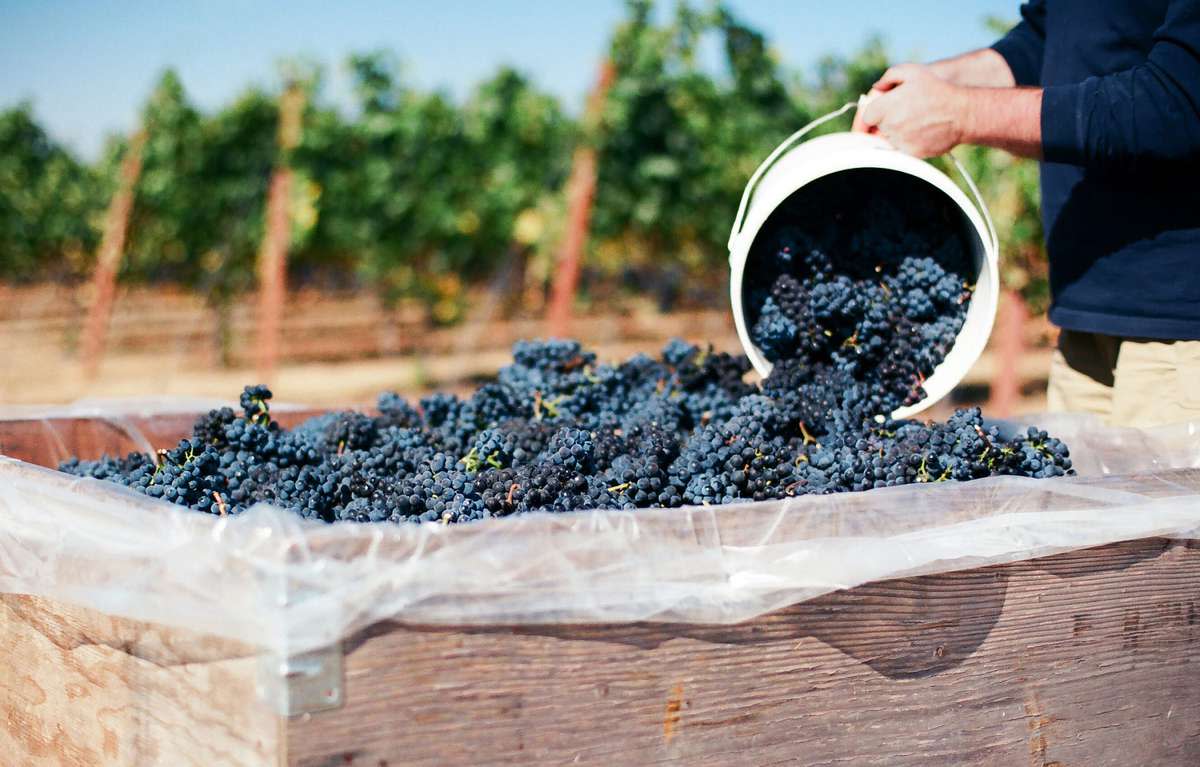
Jim Fischer / Getty Images
Jim Maresh, the 25-year-old winemaker at Oregon's Arterberry Maresh, is perched above me as he climbs racks of oak barrels stacked four high—a wineglass in one hand, a barrel thief (a glass pipette for taking wine samples) in the other. I'm impressed by his limberness as he lifts himself up through the tight corridor between the racks, the blithe ease of his ascent, but I fear that if he loses his footing and falls to the concrete floor he'll snap an ankle, all that dainty glass turning to shrapnel. I'm the father of two young children, so I'm ever-given to picturing disaster. Aerial Jim, however, doesn't seem the least concerned. The winemaker, who resembles boy-wonder chef Jamie Oliver minus the English accent, is going on in his loquacious, confident, exuberant manner, telling the story of Oregon's much-anticipated and highly promising 2008 vintage. I can't help but admire his pluck, and when I taste the Pinot Noir he draws from the uppermost barrel, the gorgeous purity of fruit and minerality makes me feel as if I'm being lifted up, too.
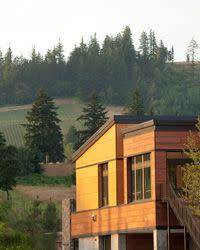
Allison Inn and Spa. © Andrea Johnson Photography.
And, maybe, transported back. My wife and I lived in Oregon for seven years, leaving New York in 1991 to begin graduate school down the I-5 in hempish, rain-sodden Eugene. I was 26, grateful at the time to escape the financial and social burdens of a big city; to flee (or vainly attempt to) the sadness of the recent loss of my mother to cancer; to reset myself, as it were, in a place more serene and wide open and a click or two off the grid.
We traveled the whole state, from the stark high deserts of the eastern half to the ancient Cascade and Coast volcanic ranges that shoulder the vast, fertile Umpqua and Willamette valleys. Aside from the beauty, what always struck me was that Oregon seemed inhabited, in my limited view, by folks who often were of a stubbornly independent and even renegade character, never quite convinced of the perceived wisdoms and blessings of the wider world. You had every variety of the dreamy and discontented, fed-up lawyers and stockbrokers, professor-bikers/druggies, gun- and God- and eco-fundamentalists. And then plenty of run-of-the-mill refugees like me, all remaining in or coming to Oregon to seek or pursue some insistent, uncontrollable and potentially soul-wrecking passion. If writing is one such passion, surely winemaking must be another, especially for anyone trying to turn a fickle, delicate, sometimes inscrutable grape like Pinot Noir into the wine that Oregon is famous for.
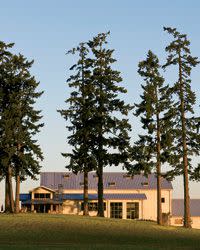
Stoller Vineyards. © Andrea Johnson Photography.
When I lived in Oregon, the northern Willamette Valley—the putative heart of wine country—was a day-trip destination from Portland. It didn't have the boutique bed-and-breakfasts or great restaurants of Napa Valley, or even Long Island's North Fork, and tasting rooms were a makeshift pull-up-a-barrel-and-have-a-seat situation. But the number of wineries has almost tripled in the past decade to nearly 400 and includes fancy new facilities like Stoller Vineyards' futuristic, solar-powered winery—the first in the U.S. to achieve gold-level LEED status. While planning my recent trip, I discovered (with mixed feelings) that the area has become more tourist-friendly. In the last year more than 25 wineries, including Eyrie Vineyards and J.K. Carriere, have debuted impressive tasting rooms. R. Stuart & Co. even opened a wine bar in downtown McMinnville that pours flights of local wines alongside Juniper Grove farm-stand cheeses and other artisanal foods. And there are new hotels, like the boutique Inn at Red Hills and the Allison Inn & Spa, the area's first luxury resort (albeit one with an eco ethos). I was concerned that this new Willamette Valley would resemble some sort of wine theme park fitted with tour bus parking, starchitect-designed wineries and impersonal, overcrowded tasting rooms.
I needn't have worried. Despite all the new development, Willamette's spirit remains individualistic. Most producers here continue to make smaller-batch wines, typically 2,000 to 5,000 cases, with a good number selling only around 1,000. Even though there are large multinational producers like Domaine Drouhin (one of my Oregon favorites), the amount of wine made in the state is, by volume, equal to less than one percent of all the wine flowing out of California. Making wine by hand remains possible here, with start-up costs still relatively reasonable compared with other parts of the country. For winery owners, being small means total control, but it also requires doing a lot if not all of the work themselves—from hard vineyard labor to pouring tastes for visitors to overseeing marketing and Internet sales.
More Amazing Recipes & Articles
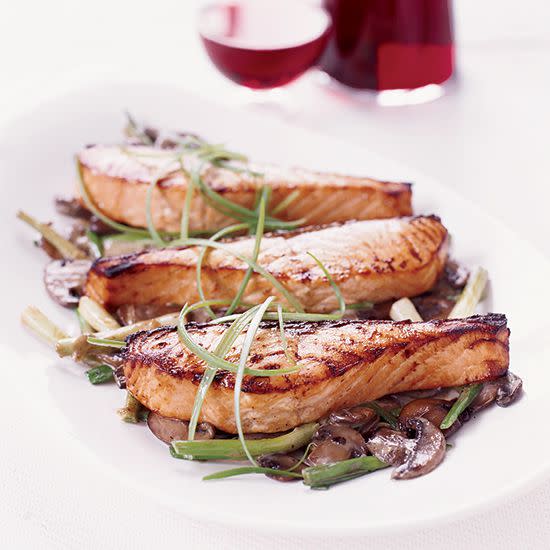
Wine Pairings: Pinot Noir
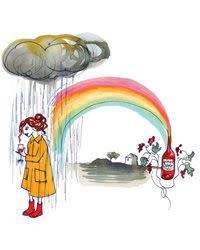

Wineries, Hotels & Restaurants in Willamette Valley
At Arterberry Maresh, Jim Maresh himself trucks the picked fruit over to the neighboring winery, where he leases time for vinification, and he has even, in a pinch, delivered a lone case to a shop out in the Cascades. His brand of self-reliance and self-belief dwarfs any self-confidence I had at his age (or even now). No doubt it's the same strain of mettle that drove pioneers like his grandfather (also named Jim) to grow wine grapes here in the 1970s, when everyone else thought it was crazy. When Jim's grandfather planted his first vines in 1970, the gentle knobs of these red hills were mostly covered with filbert trees and rye grass. There were only five wineries in Oregon and fewer than 35 vineyard acres in the entire state. But Jim's grandfather saw potential in the soil, a free-draining volcanic clay known locally as Jory, brickish in color and crumb-topping-like when dry. Today, the light-emerald shoots of grape leaves cover the hills in a patchwork of dark-trunked trees and swaying golden grain.
As Jim and I swirl glasses of his 2008 Dundee Hills Pinot, he describes his traditional winemaking methods; why he uses a longer cold soak and a longer barrel élevage; how he works a small, old wooden air-bladder press for the crush and holds out his cupped hands to collect the falling juice. He goes only by taste to determine his preferred, gentle level of extraction. There's no high-tech equipment, nothing but the bare-bones, which are Jim and the fruit and the naturally occurring yeasts that make the winemaking process go. Winemakers who work for deep-pocketed investors or corporations tend not to bank on faith as Jim does (or has to). They strive for reliability and consistency, rigorously measuring and monitoring their wines. But Jim and the other independent Oregon winemaker-owners I met are out (or up) there on their own, trying to capture that haunting, empyreal glory that perhaps only Pinot Noir can offer. Trouble always lurks, but like the weather, it's part of the vocation; potential disaster is the frisson that gives a lift to the work.
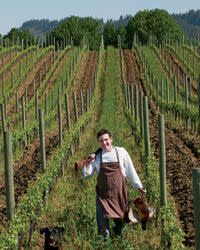
Chef Paul Bachand of Farm to Fork. © Andrea Johnson Photography.
In the Willamette, you'll still find "tasting rooms" comprising just a folding table set up inside the barrel room, which might well be an insulated metal garage. That pretty much describes the setup at McKinlay Vineyards, where Matt Kinne has made more than 20 vintages of structured, unapologetically old-school Pinot Noirs in the basement of his modest homestead set amidst the vines; he glues on his own bottle labels using a wooden contraption he rigged himself. His French barrels are sheened gray with age. We taste several of his first vintages outside the cellar door, a multicolored 1970s plastic iced tea pitcher pressed into service as our decanter.
Matt and his wife, Holly—a sardonic, quick-witted pair dressed in T-shirts and jeans—describe the daily operations of their Willamette "empire" while an old she-dog called Sex (named for being super-randy in her youth) limps about. A splash of blue in an inflatable baby pool set before the vines mirrors the clear sky. Their work involves not only vineyard and cellar duties but the caretaking of goats, horses, pigs, chickens and an extensive vegetable garden, and some home cheesemaking as well.
Financial realities dictate, but you get the feeling that these are folks whose passion for what they do will always come before making money, who would naturally welcome bigger profits (or any at all) but cannot quite alter their practices to make it so. May they never. I think a resulting distinctiveness shows in their wines and the wines of many of their independent-minded colleagues, a quality of transparency (of fruit, of soil, of clime) that seems an increasing rarity these days in a world saturated with appealing, reasonably well-made products tuned and manipulated for pleasantness but never provocation.
Along with the winemakers, young chefs from Portland, San Francisco and Seattle are setting up shop in the Willamette. Their do-it-yourself mentality fits right in with the Oregon mind-set. When we lived here in the early '90s, my wife and I used to remark that everything in Oregon was DIY, from the pizza shops offering a "u-bake" option to the Saturday markets featuring the one-off, semi-junky, wacky crafts everyone in town seemed to be making in their spare time. We got into the spirit. We grew our own vegetables, made jam from the plums that rained down on our damp little cottage, cultivated shiitake mushrooms on a log. I even brewed my own beer, a somewhat misguided ginger stout that made me wonder each time I popped a bottle open if it would be the very last taste in my mouth.
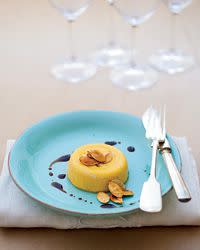
Nick's Italian Café. © Susan Seubert.
Today, chefs around the country are making their own preserves and brewing their own beer, but in the Willamette Valley, this is more than a trend: It's a tradition. Not that the area has always had good restaurants. Fifteen years ago, I felt happy to find a decent plate of biscuits and gravy at a roadside diner. Now, new local-minded spots like Farm to Fork at the Inn at Red Hills serve ambitious dishes like duck leg confit with lardons and house-made potato chips. And Willamette institutions like Nick's Italian Café have updated their menus to include tender pork trotter.
Eric Bechard is the Willamette's latest chef transplant. After working at Alberta Street Oyster Bar in Portland and Opal in Seattle, he moved to McMinnville, bought a small plot of land for a farm and opened Thistle. Like Jim Maresh and Matt Kinne, he believes in self-reliance, creating menus from what the land produces. The harvest of six local farmers determines the dishes on the daily changing menu.
Eric and his partner, Emily Howard, designed and built the 20-seat space themselves, fashioning the tables and five-seat counter from former bowling lanes, the shelving out of restored barn beams. Emily runs the front of the house, while Eric roasts black cod with artichokes and pocha beans on a six-hob stove and helps wash pots when there's a lull. As I scrape up the last drops of Eric's smooth farro-and-broccoli soup, which comes decadently topped with a fried local egg, I can't help thinking that this place is just what you'd create if you were young, talented and passionate—resourceful rather than rich.
As I await my next course, Emily pours me a glass of the Arterberry Maresh Pinot Noir (her cousin gives Jim a hand during harvest), and I think, Isn't this what we crave when traveling—to encounter the taste of something idiosyncratically and singularly expressive of the place? Something that tells us, yes, we are here. Only here.
Chang-rae Lee teaches creative writing at Princeton University. His fourth novel, The Surrendered, will be published in March 2010.

